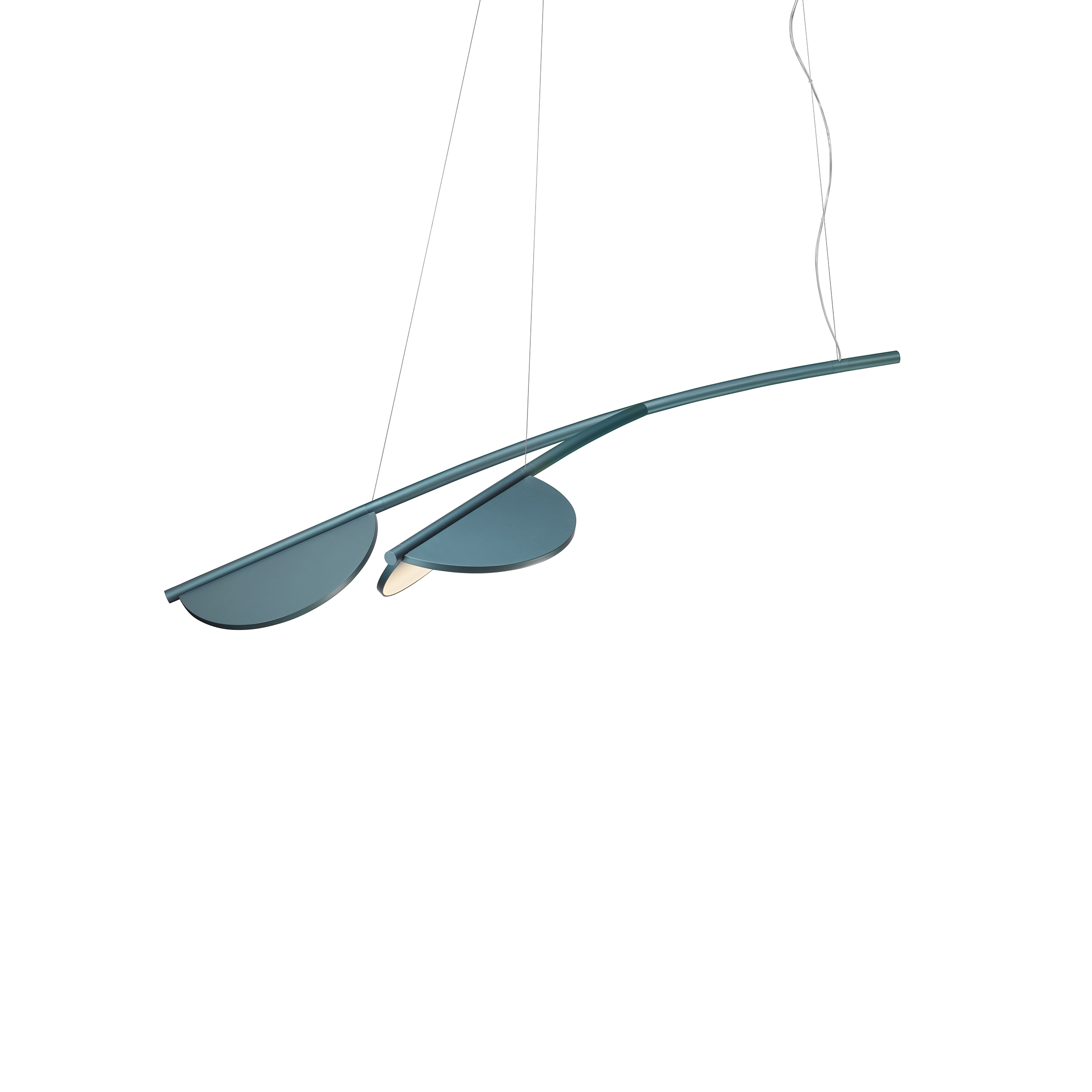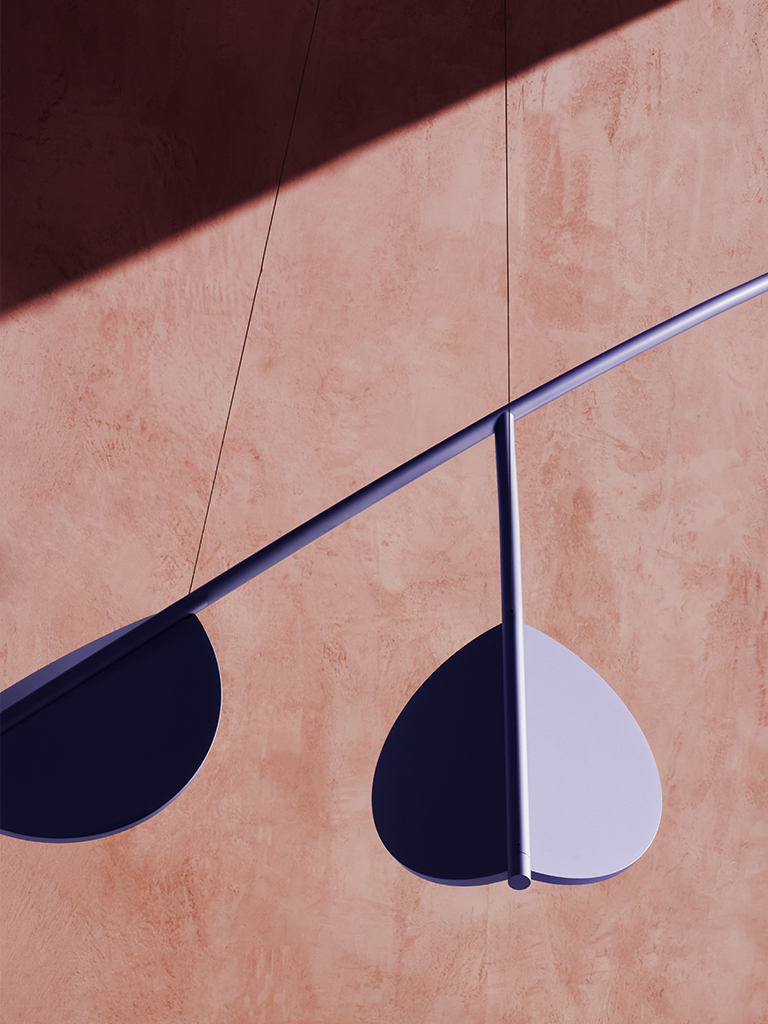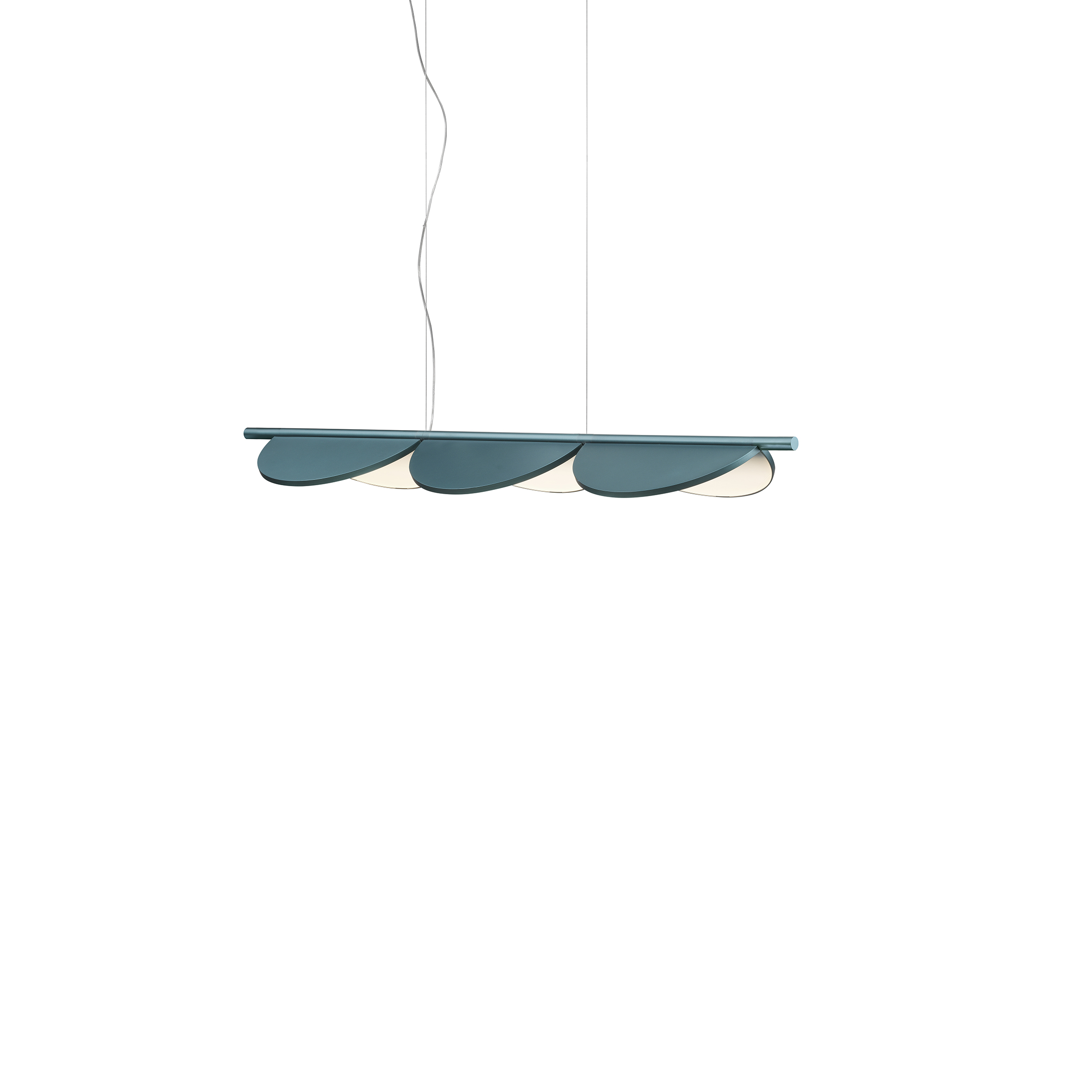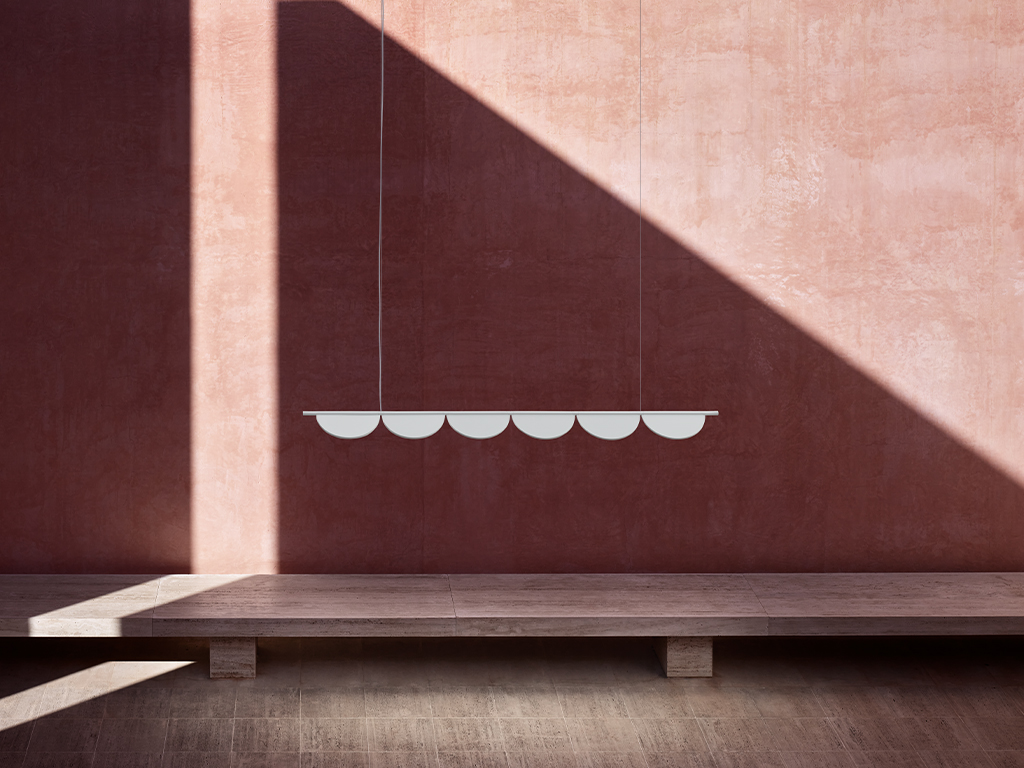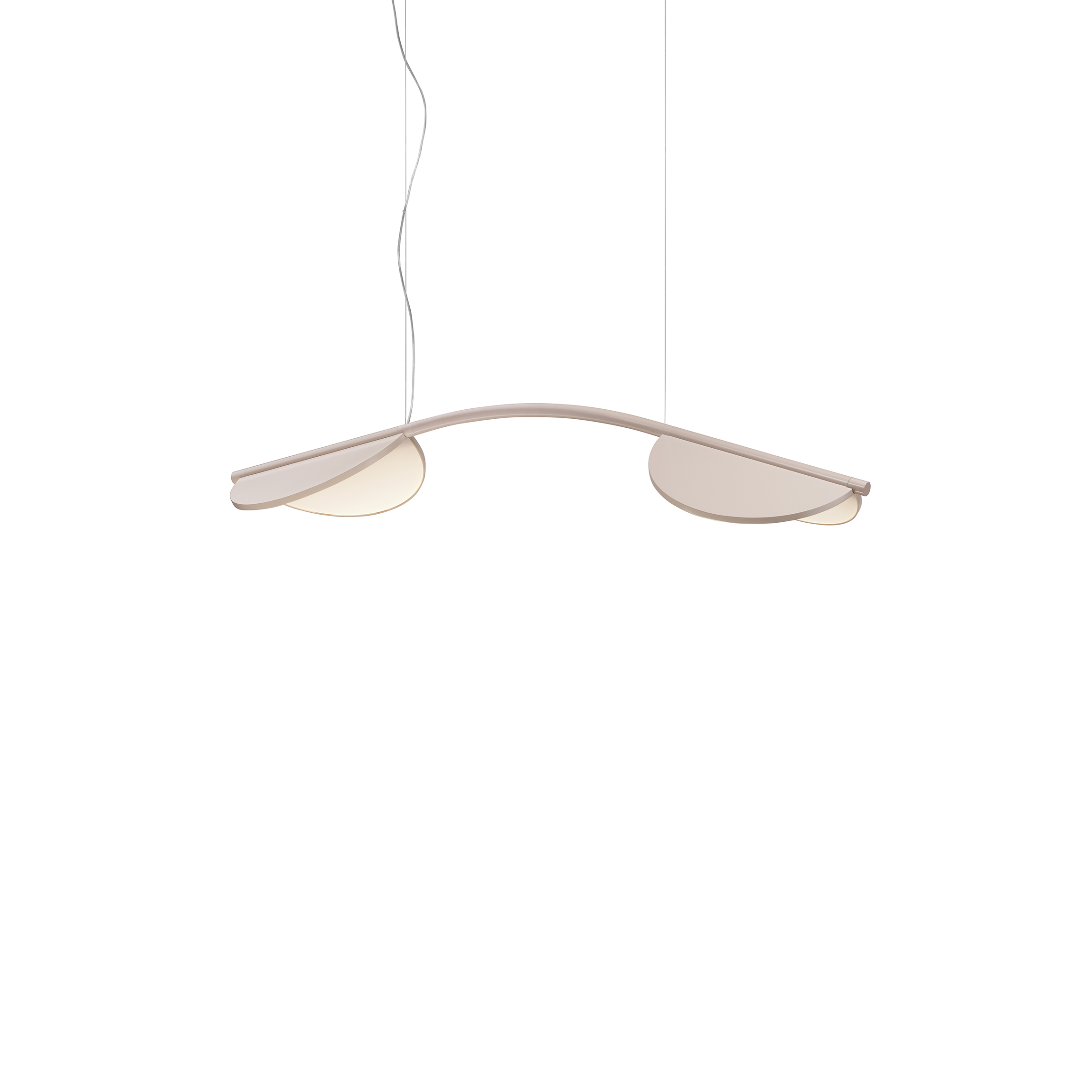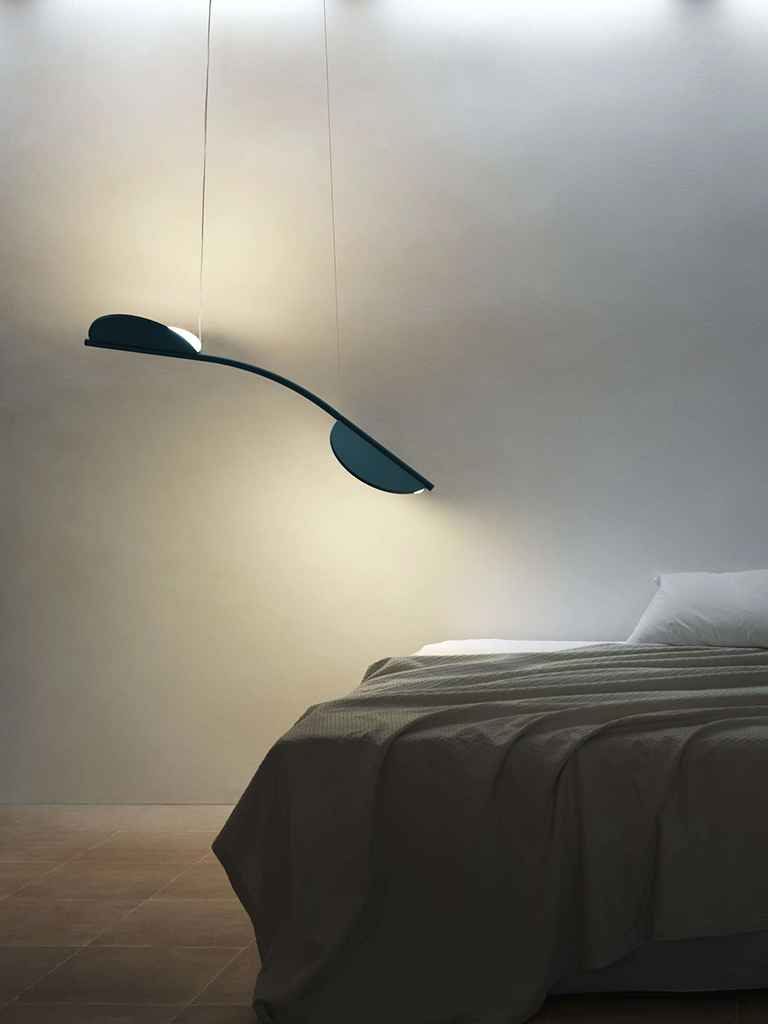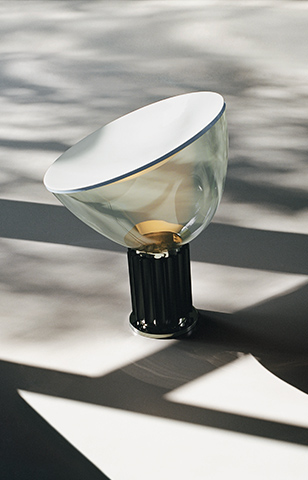Patricia Urquiola unveils the new Almendra
Created by the Spanish designer Patricia Urquiola, Almendra is a modular lighting system whose shapes and colors are reminiscent of the almond tree, from which it takes its name. An ambitious project in terms of design and materials, a synthesis of poetry and sustainability achieved with the help of sublime design and cutting edge technology. To celebrate Almendra, Patricia Urquiola tells us about its genesis, and talks about her vision for the future.
Interview Rosa Bertoli - Photography Tommaso Sartori
RB: Let's start with Almendra. It is a lighting project that summarizes many of the recurring themes in your work: colour, curved shapes, modularity, composition. How was this project conceived?
PU: One thing leads to another. Almendra comes from the Serena collection (2015), where we tried to have very simple diffusing elements that protected the light in a poetic way, with very fine aluminum leaves. The table lamp remained in the collection, but there was never an opportunity to create the suspended one, which was imagined as a branch with three petals, because we had not found a suitable technology. It remained in my head. I later wanted to adapt the concept to an architectural project. Talking about it with Flos, we thought about rethinking it. The idea of this leaf remained, becoming a very simple shape that also resembles a shell, and from Serena it has become an almond, Almendra. When I think of the almond tree, I don't think only of the flowering branch. Almonds are organisms: the almond is not a fruit, it is a seed that is a kind of oval container, it must open to let the almond come out. They are very simple objects. We went from the leaf to something more fleshy, solid, which, simplified, became a lighting device. It is now a suspended module. I like it because it has remained a very simplified modular object that looks like a small open shell, natural but also mechanical. Technological and natural, and at the same time very simple in language and poetics.
RB: How did you develop the design for Almendra?
PU: The module can be composed in various ways, sometimes it connects like the almonds attached to the branch, or they can compose various elements, vertical or horizontal.Another possibility is that it divides into two or three other branches, creating a very light composition within the space. The elements of this module are all conceived to create light: those two fins are like a diffuser, a metaphor for the almond.
RB: Almendra's palette includes pastel shades including off-white, nude, ochre, anthracite, as well as metallic petrol green and lilac. How did you choose these colors?
PU: The colors come from nature. I looked at almond trees in Ibiza. Starting from green, we chose the colors of an almendro, from the whites of its flowers to the ocher of branches and shells. And the nude, colors that refer to a branch. Above all, what I like is that an almond is an object with its own temporality. Almendra is the seed and the light, and it lives inside the shell which is like a small house, a space that contains the seed, that protects it. I wanted to explore the energy of almonds. The lamp is still a mechanical object, but in the near future I imagine a light fixture that opens and closes, which has its own mobility.
RB: At the centre of Almendra there is also a strong desire to create an all-round sustainable product. What are the building blocks of Almendra from this point of view, and how were they developed during the creation process?
PU: We wanted to conceive the lamp as if it were a small organism. The new luminaires have an LED source, they are really like organisms. It is no longer a lamp with a cap and a bulb. They are done in a much more complex way, but at the same time they don't have to translate that complexity, they have to be very simple from a visual point of view. A simple modular light source that in itself remains a petal, or a simple shell. For me it was important to disassemble the object at the end of its life, and simply divide its elements. Often with complex objects this is the hardest part. Almendra is already conceived with this logic. The other important thing are the materials of Almendra, such as extruded aluminum, a recyclable material that makes up the branch and the lighting fixture. The side shells, on the other hand, have been simplified and produced with a sustainable polycarbonate material. The plastics used in the project are reasoned with a vision that looks to the future, a byproduct from the production of paper. And finally it was fundamental that it could be taken apart easily. The finishes are always water-based, the connections between the pieces are snap-in, there are no screws or glues. We are in a moment that marks the beginning of a process, and all these products must be designed with their end in mind. There are new links between production and use. It is important, in the complexity, to find the right solutions.
RB: In 2020, in a Q&A for Flos Stories, you told us, 'I collect dreams'. What are your dreams right now, and what do you imagine for the future?
PU: I dream of planning our personal time, of learning to be more in contact with various realities. I dream of being able not to find a perfect balance, but to be able to filter my life through this. My time is very important to me. A second dream for me is to give man a different role. In the moment in which we live, with this anthropocentric vision of life, it is clear to everyone that we are no longer the center of the argument, we are collateral to a more complex system. This Urquioline constellation, where my avatar moves, represents how we are part of a thing, but we are not at the center of everything, we are at the center of our way of dealing with emotions, we must enter a circuit that is wider than us. This is the great limitation of our humanistic education, since we were the focus, one of the errors that led us to naively create other errors was the fact that the world was all designed for us to progress. The problem is that we have also created an imbalance. Once we have a broader vision, we must understand that not everything is made for us, we ourselves are part of a process that is broader, so we must place ourselves in a different role. Overcoming the anthropocentric perspective means understanding that we are part of a complex constellation in which not everything must necessarily be made for humans. We have to understand that we are a small part of this system, to observe and interact from a broader perspective. Form an awareness of our present and future situation. Become a bit like compost, and finally understand the reality of living on this planet.














